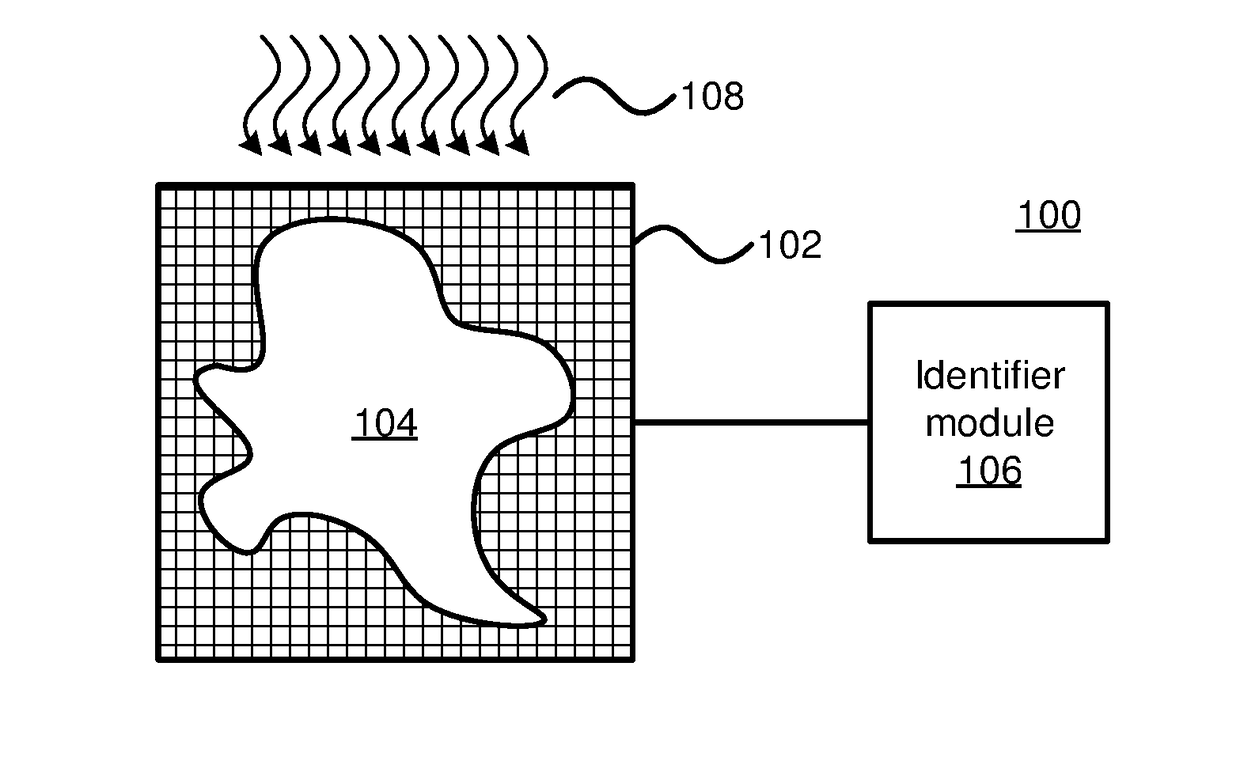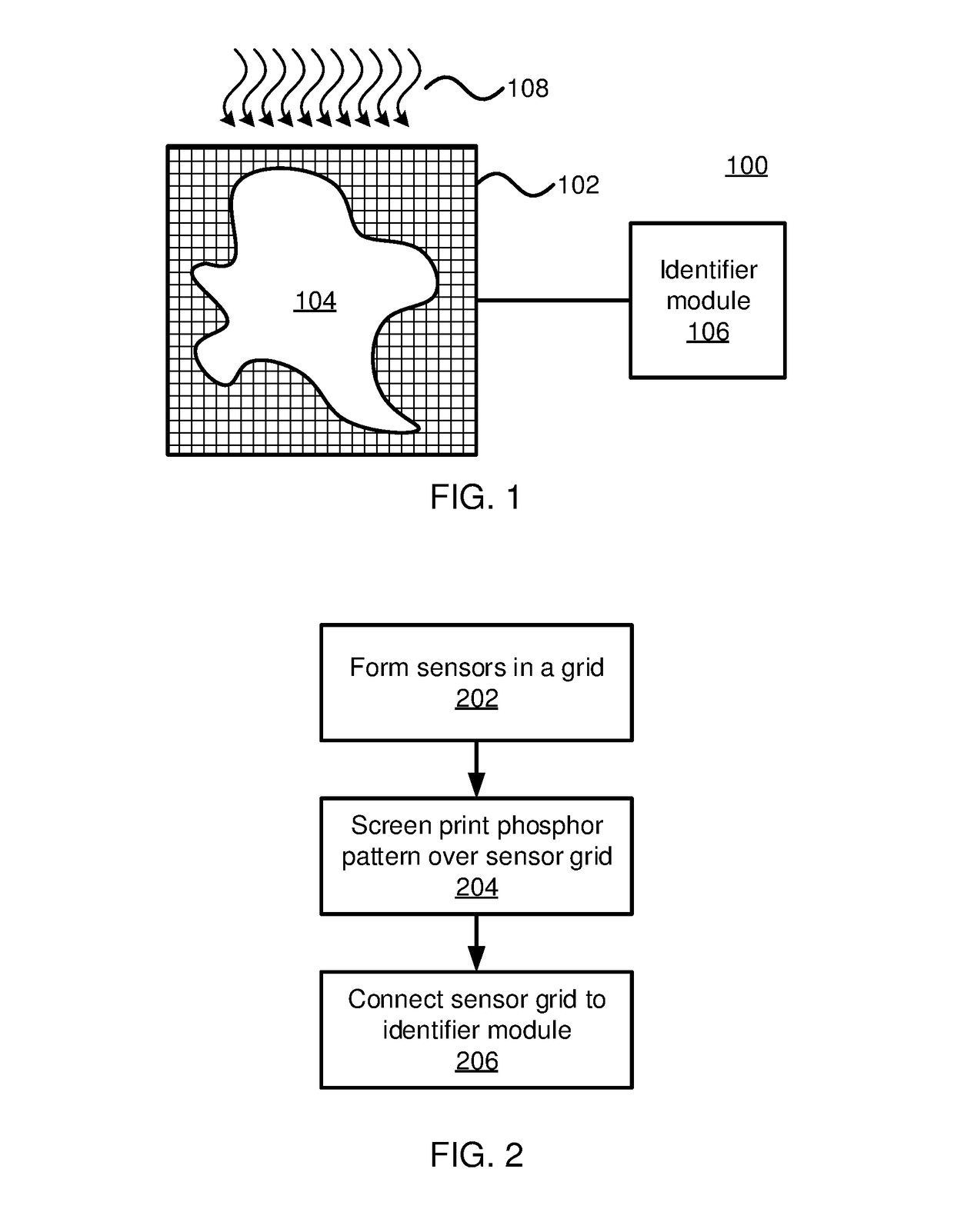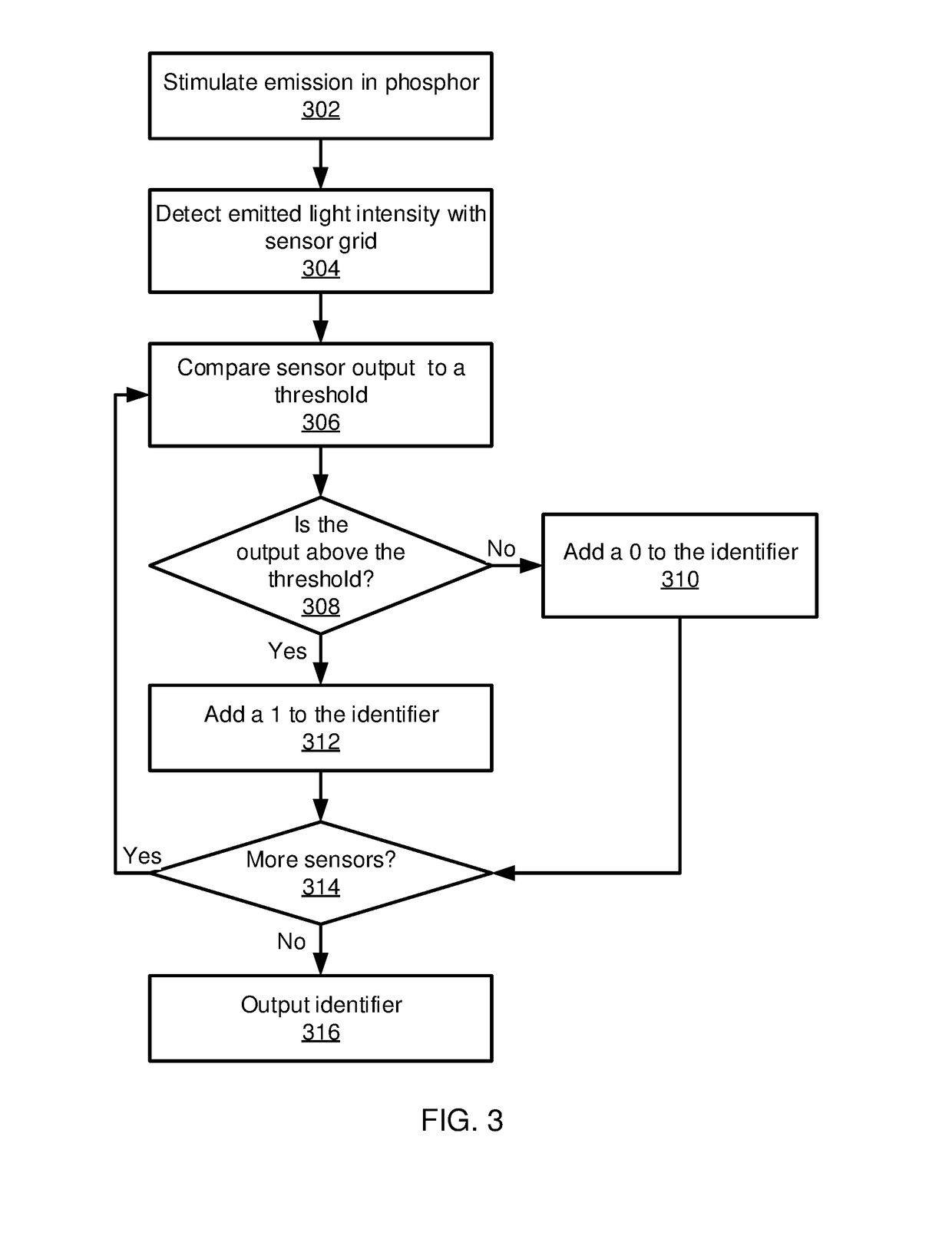Screen printed phosphors for intrinsic chip identifiers
a chip identification and phosphor technology, applied in the field of physical unclonable functions, can solve the problems of difficult to ensure that the measurement of a given puf will be consistent, and existing attempts at creating pufs suffer from a lack of reproducibility in measurement, so as to achieve substantial spatial variability
- Summary
- Abstract
- Description
- Claims
- Application Information
AI Technical Summary
Benefits of technology
Problems solved by technology
Method used
Image
Examples
Embodiment Construction
[0017]Embodiments of the present invention provide physically unclonable functions (PUFs) in the form of screen-printed phosphor patterns. The screen-printing process, specifically when applied to phosphor particles embedded in a matrix, creates a significant amount of variability, such that the printed pattern will differ measurably from device to device. The pattern can be applied to an on-chip imaging sensor and activated by emissions through a device housing.
[0018]Referring now to FIG. 1, an exemplary PUF system 100 is shown. In particular, a screen-printed phosphor pattern 104 is applied over an imaging sensor grid 102. The imaging sensor grid 102 may be implemented with any appropriate sensor technology to form a grid that is, e.g., 100 pixels by 100 pixels. The sensor grid 102 may have a size that is selected in accordance with security needs, where a larger grid will provide additional identifier bits. In one specific embodiment, it is contemplated that the sensor grid 102 m...
PUM
| Property | Measurement | Unit |
|---|---|---|
| wavelength | aaaaa | aaaaa |
| wavelength | aaaaa | aaaaa |
| distance | aaaaa | aaaaa |
Abstract
Description
Claims
Application Information
 Login to View More
Login to View More - R&D
- Intellectual Property
- Life Sciences
- Materials
- Tech Scout
- Unparalleled Data Quality
- Higher Quality Content
- 60% Fewer Hallucinations
Browse by: Latest US Patents, China's latest patents, Technical Efficacy Thesaurus, Application Domain, Technology Topic, Popular Technical Reports.
© 2025 PatSnap. All rights reserved.Legal|Privacy policy|Modern Slavery Act Transparency Statement|Sitemap|About US| Contact US: help@patsnap.com



